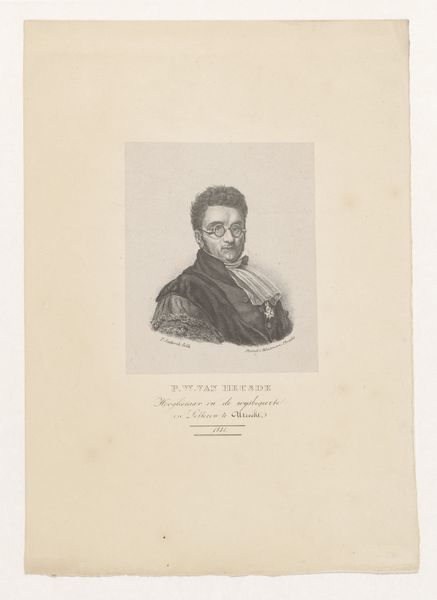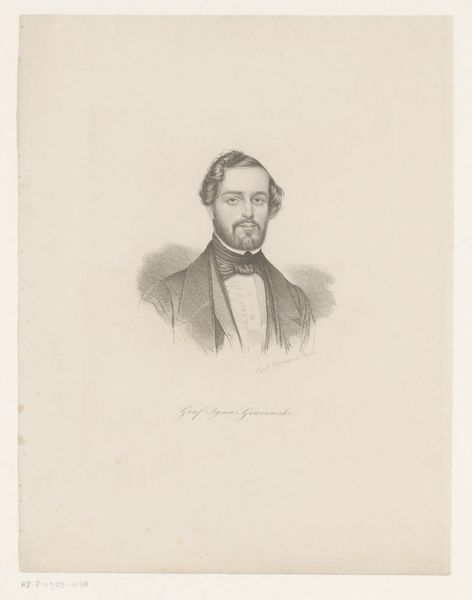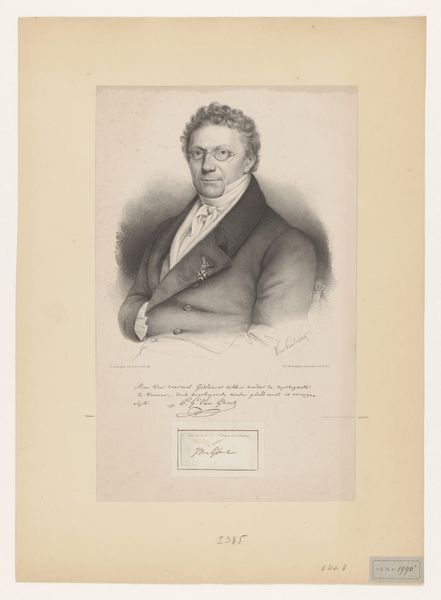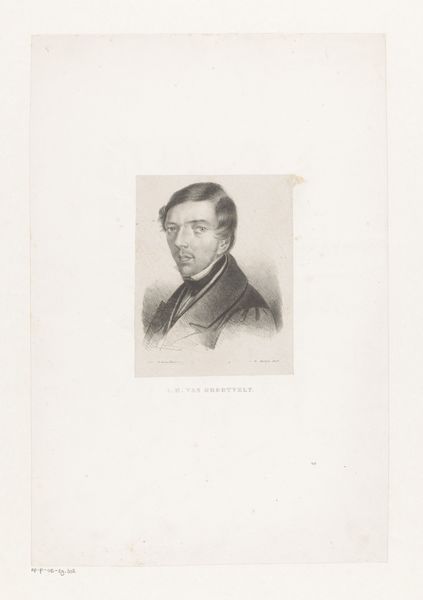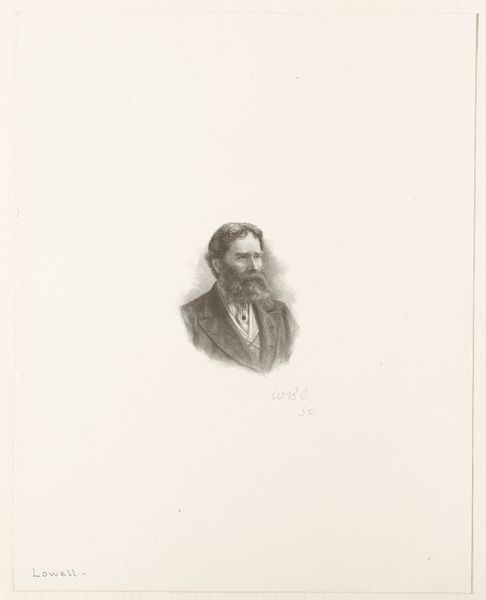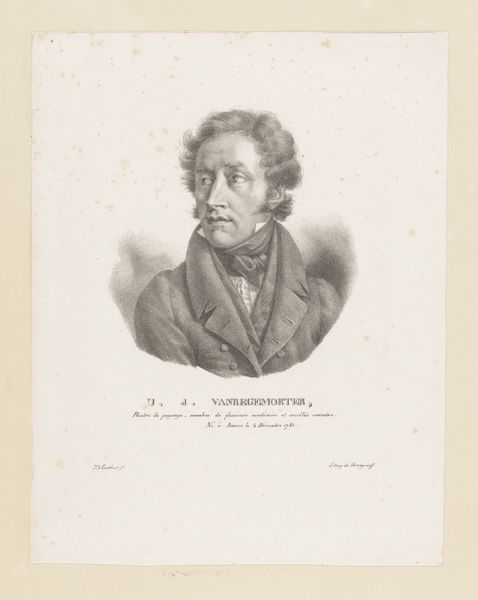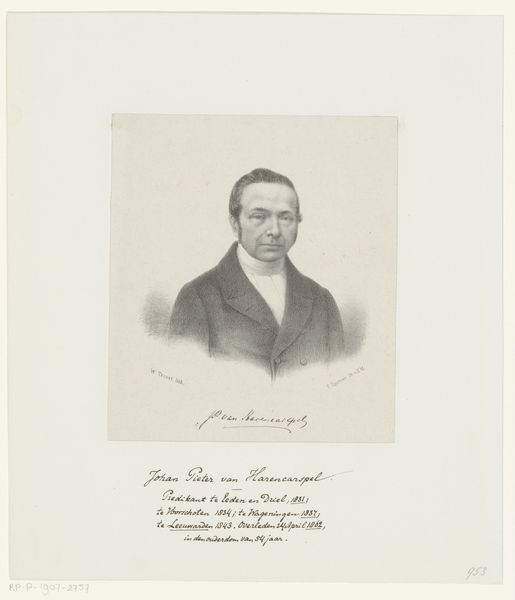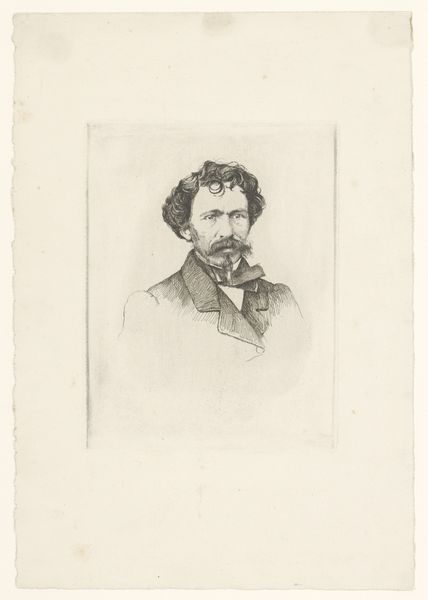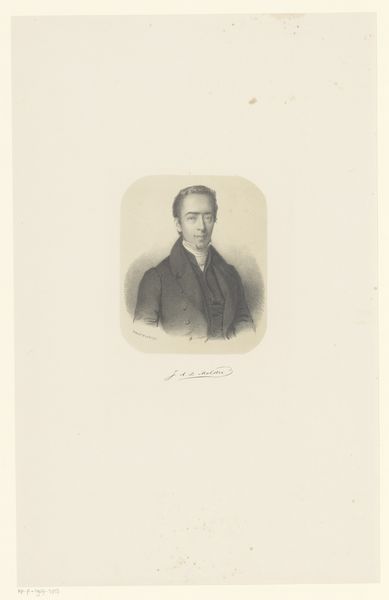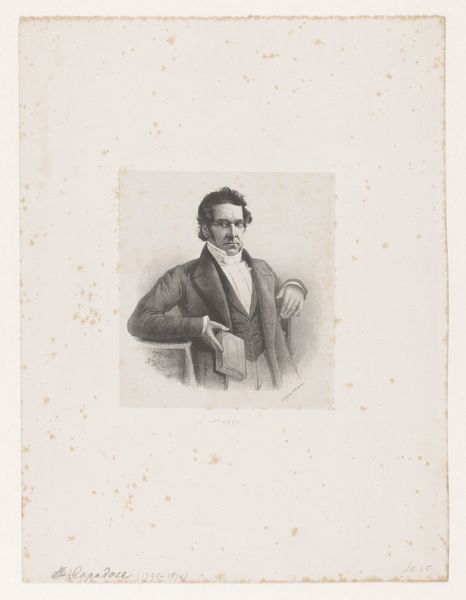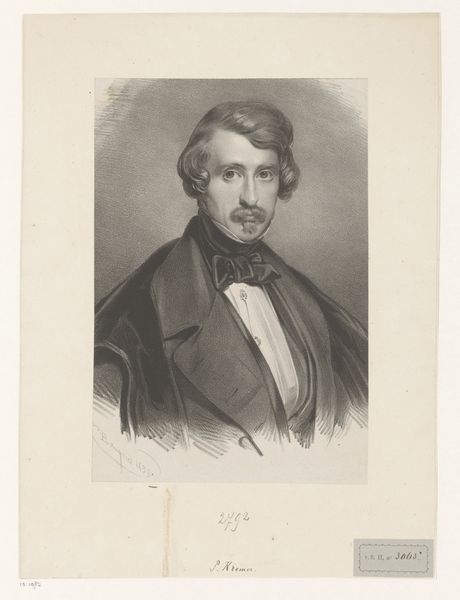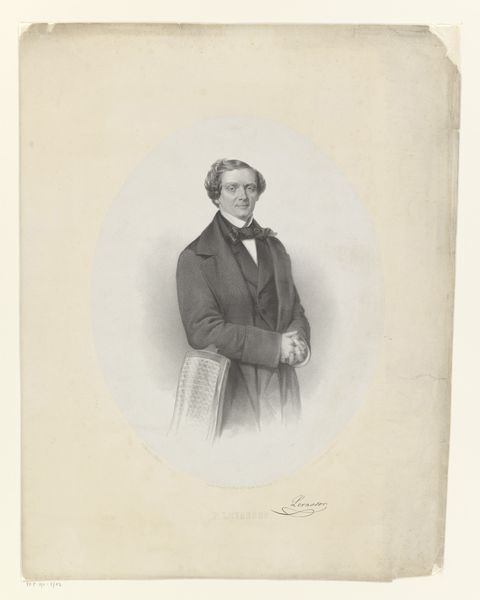
Dimensions: height 181 mm, width 156 mm
Copyright: Rijks Museum: Open Domain
Curator: What a striking piece. The work here is a portrait of Ferdinand Freiligrath dating from between 1820 and 1899, credited to F. Richter. It appears to be an engraving done in ink on paper. Editor: There’s an intensity to his gaze. It’s immediately arresting. The engraver has done well capturing a Romantic-era feeling of profound seriousness, almost bordering on melancholy. Curator: Absolutely. Richter presents Freiligrath as both intellectual and intensely feeling. Let’s not forget that Freiligrath was a key figure of pre-March Vormärz revolutionary poetry, poetry suppressed by the authorities for inciting rebellion, which led to him later going into exile. Do you see any possible visual allusions that Richter may have been playing with here to signify Freiligrath’s social standing? Editor: The subject is clearly well dressed. And yes, Richter subtly hints at this status, using a tight composition that almost forces us to engage directly with Freiligrath. There’s a quiet dignity here, though he’s framed in such a way that acknowledges the social constraints and possible dangers he was operating under. This might also explain why the gaze you point out appears defiant. Curator: Precisely. Think about how images of intellectuals and revolutionaries are circulated and controlled within socio-political contexts, even today. This image could have served to both solidify his identity as a rebellious figure and make him a target for the state. This is about not only portraying the man but the public performance of dissidence through visual representation. Editor: Yes, the role of art in shaping public figures and contributing to broader social movements cannot be understated, but consider how the very act of making and circulating a portrait like this would have been perceived, an object of visual and political currency. What decisions do you think went into its creation, circulation, and ultimate reception? Curator: Right! To grapple with these questions, we must constantly think of both the material conditions of the production, and the circulation of those materials, which always contain political intentions. Considering this allows a more comprehensive understanding of the cultural history embedded within. Editor: Looking at it this way adds another layer of complexity. It’s a beautiful engraving, to be sure, but understanding the history imbues it with so much more depth.
Comments
No comments
Be the first to comment and join the conversation on the ultimate creative platform.
